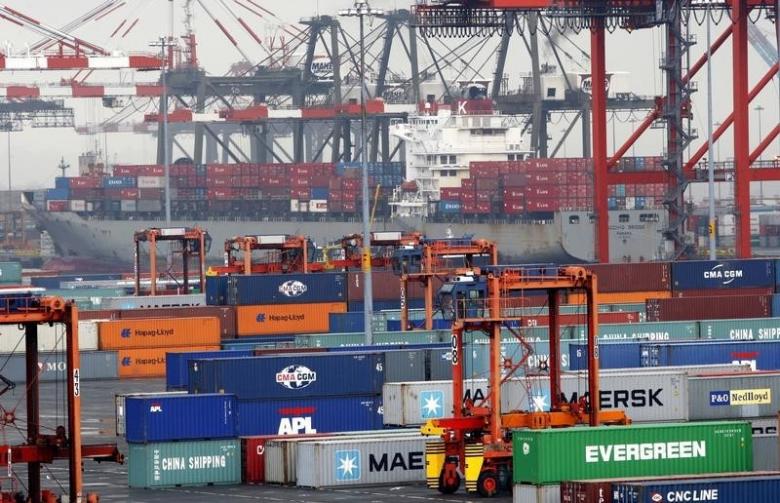
Although the decrease in exports is lower compared to the fall of $2 billion between FY15 and FY16, imports over the same period increased more than $7.2 billion. The last time the exports showed a positive year-on-year growth was in June 2014.
The largest decline in exports between FY16 and FY17 was in petroleum products at 8%, followed by the group of products classified as “other manufactures” at 4%. Exports of food products dipped 3% and those of textile products fell 2%.
An intelligent nation with resources – what goes wrong?
Although raw cotton, cotton yarn and cotton cloth registered a decline in exports, there was an increase in shipments of knitwear, bed wear and readymade garments.
Similarly, there was an increase in exports of fish and fish preparations, spices, sugar and other food items while shipments of more commonly exported products such as rice, fruits, meat and meat preparations fell.
Exports of sports goods, leather gloves, leather footwear, cutlery, guar and guar products, pharmaceutical products and other chemical products also increased.
Exports to the US edged down 1% between FY16 and FY17, exports to China fell 15% and to the UK they inched down 0.6%. On the other hand, exports to Germany, Belgium and the Netherlands rose.
The GSP Plus status awarded by the European Union to Pakistan may have averted the decline in exports to the 28-nation bloc.
Similarly, exports to Turkey rose 16% and shipments to Thailand increased more than 40%. Exports to Indonesia and South Korea increased more than 21% and 34% respectively. Pakistan is in the process of negotiating a free trade agreement (FTA) with Turkey and the above East Asian economies. Although export promotion in major destinations is essential, Pakistan must complete the negotiations for FTA.
Products can be classified as raw material, intermediate goods and consumer goods. Exported raw material and intermediate goods require further processing by foreign trading partners before being sold as consumer goods. Furthermore, tradable goods consist of either agricultural or industrial goods.
Although products may undergo transformation through different stages of production, the industrial consumer goods are likely to involve greater value addition and product differentiation than agricultural consumer goods.
Product classifications
Data from UN Comtrade is used to analyse exports according to product classifications. Exports of every product classification within agricultural and industrial sectors posted a decline in value between calendar years 2015 and 2016, except for industrial consumer goods, which edged up 0.6%.
Considering products that are frequently traded, a positive export growth was reported in textile products and mineral products, which are industrial consumer goods.
Similarly, positive growth was noted in exports of intermediate industrial goods such as chemical products and paper products.
On the other hand, exports of several products fell sharply in the agricultural sector, except for raw material of animal, vegetable fats and oils and agriculture-based chemical consumer products.
Although exports of industrial textile products to the EU increased across all three product classifications, the largest increase, in dollar terms, was reported in consumer textile products.
Other industrial consumer products that showed positive export growth were mineral products and base metals.
On the other hand, exports of textile products to the US decreased across all three product classifications. However, there was an increase in exports of consumer goods of base metals and of precious and semi-precious stones to the US.
ECC allows sugar export, but defers decisions on CPEC and circular debt
An increase was reported in exports of agricultural consumer goods, industrial consumer goods in textile industry as well as in medical and surgical instruments to China. On the other hand, there was a significant decline in exports of intermediate goods in the textile industry to China.
Export potential
The International Trade Centre (ITC) estimates the export potential by market and product for each exporter.
According to its estimates, Pakistan has an untapped export potential of $13 billion. There is potential in home textile products, apparels, leather products and cereals such as rice.
Furthermore, the ITC indicates the potential in cement, instruments used in medical science, polyethylene terephthalate, tubes of iron or steel and vegetable fats and oils.
Pakistan has untapped potential in exports to important destinations such as the US, China, Germany, the UK, the United Arab Emirates, France, the Netherlands and Spain along with several other trading partners.
On the other hand, Pakistan exports more than its potential to Bangladesh and Afghanistan.
In essence, the government needs to adopt a holistic approach aimed at developing both the agricultural and industrial sectors in order to increase exports of the country.
It is essential to have an agricultural policy that increases the supply of raw material to agro-based industries, both domestic and foreign, such that it can help domestic textile producers regain lost competitiveness in the world market.
Furthermore, there is a need to diversify the range of value-added traditional industrial goods, such as consumer textile and leather products, as well as of non-traditional industrial goods.
Lastly, as China-Pakistan Economic Corridor (CPEC) projects are likely to improve the transportation network, it is essential that industrial and trade policies are adopted to ensure facilitation of exporters not only in Pakistan, but also in important export destinations by lowering the trade costs and barriers.
The writer is Assistant Professor
of Economics and Research Fellow at CBER, IBA
Published in The Express Tribune, July 31st, 2017.
Like Business on Facebook, follow @TribuneBiz on Twitter to stay informed and join in the conversation.






1719053250-0/BeFunky-collage-(5)1719053250-0-270x192.webp)










COMMENTS (2)
Comments are moderated and generally will be posted if they are on-topic and not abusive.
For more information, please see our Comments FAQ